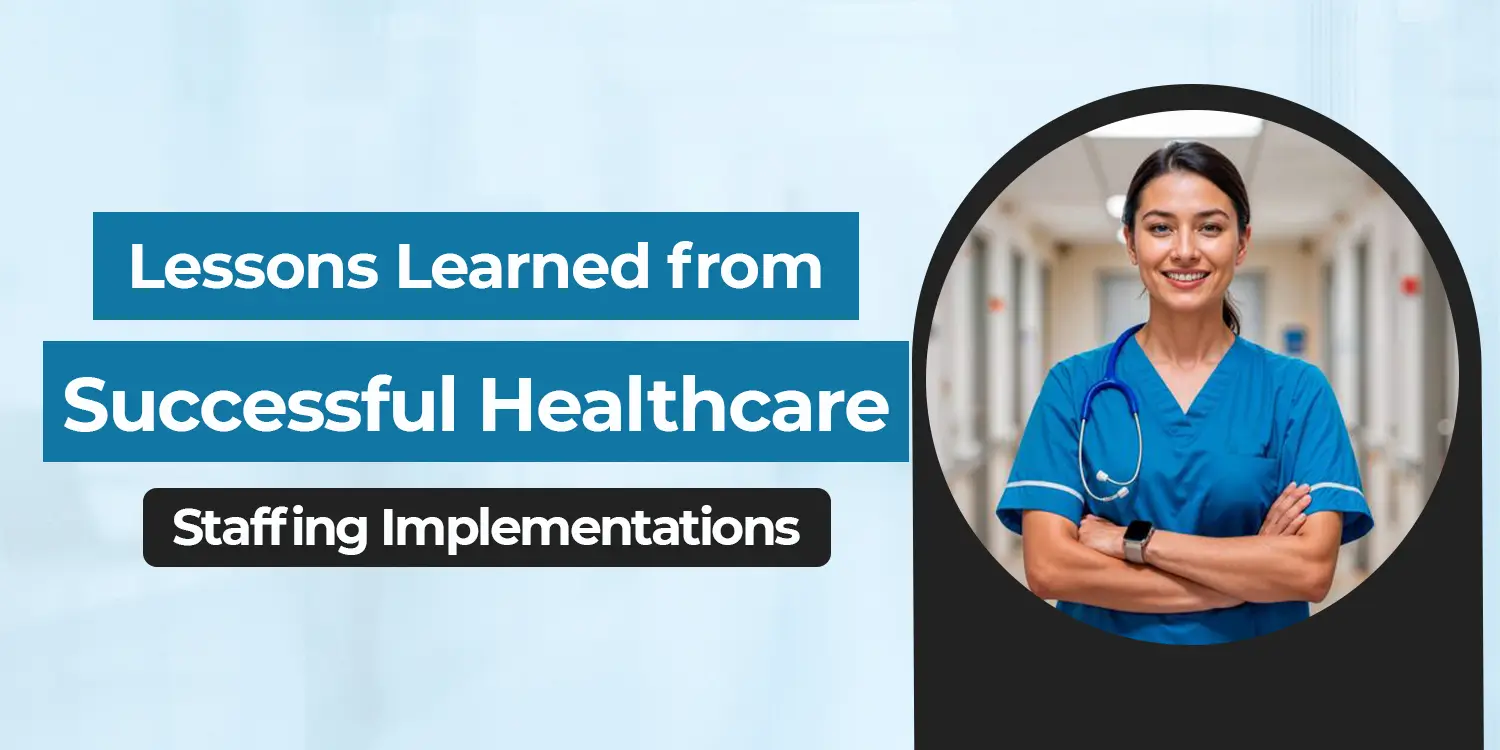In today’s fast-moving medical environment, the way hospitals and clinics manage their workforce can mean the difference between seamless patient care and operational chaos. Healthcare Staffing Implementations have become a cornerstone for ensuring efficiency, reducing burnout, and enhancing patient satisfaction. Over the years, successful rollouts have offered valuable lessons that organizations large and small can adopt.
At JR Enterprise, we’ve observed that the most impactful implementations blend medical staffing solutions, strategic planning, and a clear focus on long-term sustainability. Let’s explore what healthcare leaders have learned from successful staffing projects and how these lessons can guide future efforts.
1. Start with a Clear Vision and Defined Goals
Every successful staffing journey begins with clarity. Organizations that thrive in their staffing implementation process know exactly what they want to achieve. For some, the goal may be reducing overtime costs; for others, it could be increasing hospital staffing efficiency or improving nurse-to-patient ratios.
A well-defined vision allows leaders to set measurable benchmarks. Without these goals, teams often end up reacting to issues instead of proactively creating solutions. Simply put, clarity at the start prevents confusion down the line.
2. Communication Is the Backbone of Change
One of the biggest lessons in healthcare workforce management is the importance of communication. Successful staffing projects involve nurses, doctors, HR teams, and administrators from day one.
When leadership actively listens to staff concerns whether it’s about scheduling preferences or workload fairness it fosters trust. This inclusivity not only smooths the staffing implementation process but also increases employee buy-in. Transparency and open dialogue help avoid resistance to change.
3. Data-Driven Decisions Build Strong Foundations
Relying on intuition alone is risky. Forward-thinking healthcare systems invest in technology to analyze staffing trends, patient census data, and workforce needs. These insights allow administrators to predict peak times, deploy staff efficiently, and reduce unnecessary labor costs.
By leveraging analytics, hospitals improve hospital staffing efficiency while avoiding common pitfalls such as underutilization of specialists or overstaffing in low-demand areas. Numbers don’t just tell a story they guide smart action.
4. Flexibility Is Essential for Long-Term Success
Rigid systems often collapse under pressure. Successful medical staffing solutions build flexibility into their models. This might mean creating float pools, using part-time staff strategically, or adopting on-demand scheduling software.
Adaptability ensures that healthcare providers can respond to sudden surges in patient volume such as flu season without overwhelming their workforce. In fact, nurse staffing best practices emphasize balancing core staff with contingent workers to maintain quality care without straining resources.
5. Technology Integration Makes the Process Seamless
From cloud-based scheduling tools to automated shift-swapping platforms, technology has become indispensable. Organizations that embrace digital solutions during healthcare staffing implementations consistently outperform those relying on manual systems.
Tech-driven platforms reduce errors, save time, and improve staff satisfaction by giving employees more control over their schedules. Moreover, real-time dashboards empower managers to monitor staffing efficiency at a glance.
6. Training and Support Cannot Be an Afterthought
Even the most advanced systems fail if users don’t know how to operate them. Successful implementations always include robust training programs and ongoing support.
At JR Enterprise, we’ve seen how hospitals that invest in continuous education achieve smoother transitions and higher compliance rates. Staff who feel supported during the staffing implementation process are more confident, less stressed, and ultimately more productive.
7. Monitor, Measure, and Adjust Continuously
The work doesn’t end once a staffing system is launched. In fact, ongoing monitoring is one of the most vital lessons learned. Leaders must evaluate metrics such as employee turnover, patient satisfaction, and cost savings.
By measuring outcomes regularly, organizations can refine their approach and ensure that their healthcare workforce management strategies remain effective. Continuous improvement is the hallmark of lasting success.
8. Foster a Culture of Collaboration
At its core, staffing is about people. Organizations that cultivate collaboration between departments see far smoother rollouts. This synergy extends beyond nurses and administrators; it includes IT teams, HR specialists, and even patients indirectly.
Nurse staffing best practices stress teamwork as a driver of success. When staff members feel like active participants instead of passive recipients, they contribute to shaping better processes and outcomes.
9. Balance Efficiency with Compassion
It’s easy to focus solely on numbers costs, schedules, productivity. But the most successful healthcare staffing implementations never lose sight of humanity. Patient care remains the ultimate goal, and staff well-being is inseparable from that mission.
Hospitals that prioritize compassion alongside hospital staffing efficiency create healthier work environments and achieve better long-term results. Remember, efficiency without empathy risks burnout and turnover.
Final Thoughts
The journey of healthcare staffing implementations is complex but deeply rewarding when done right. The lessons learned from goal setting and open communication to embracing technology and continuous monitoring are guiding lights for hospitals striving for excellence.
At JR Enterprise, we believe the best medical staffing solutions balance efficiency with empathy, strategy with adaptability, and innovation with collaboration. By learning from past successes, healthcare organizations can craft staffing systems that not only function smoothly but also elevate patient care and employee satisfaction.


Leave A Comment